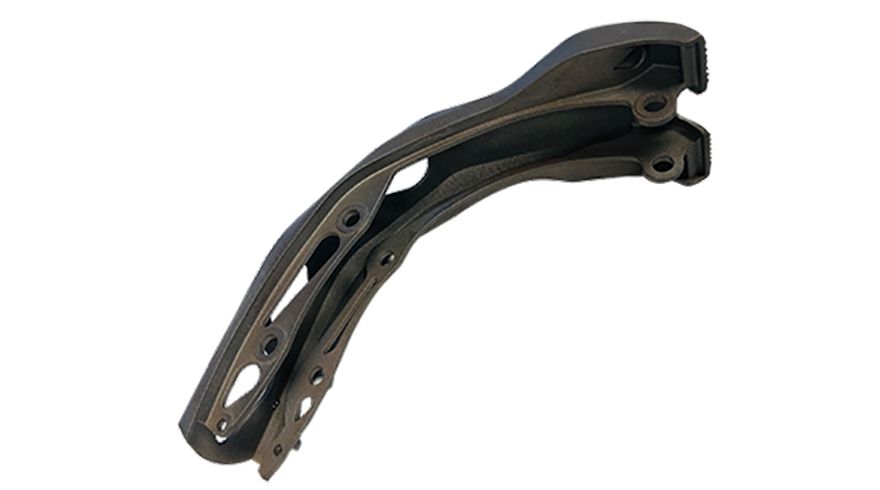 The motor node was additively manufactured using Laser Bed Powder Bed Fusion from Sandvik Osprey Ti-6Al-4V. Picture courtesy of Sandvik AB
The motor node was additively manufactured using Laser Bed Powder Bed Fusion from Sandvik Osprey Ti-6Al-4V. Picture courtesy of Sandvik ABAlthough motor nodes — the part that holds the electric motor onto a bicycle frame — are one of the hardest e-bike parts to manufacture, when GSD Global turned to
Sandvik experts in metal powder and additive manufacturing (AM) to 3-D print motor nodes in titanium, they found they could achieve a lighter, more durable and much more energy- efficient solution.
GSD Global is an engineering and design consultancy with long-standing experience in creating premium electronic bicycles (also known as e-bikes). The company, which is headed by Zach Krapfl (an electric vehicle engineer based in the USA), works with various bicycle OEMs, with the majority of its design input focusing on e-bikes.
For almost a decade, the company has been partnering with Bosch e-bike systems and says that until recently e-bike uptake has been slow, attributing this in part to titanium components such as the motor node being “very difficult to produce using traditional CNC machining processes, and therefor costly”.
When GSD Global turned to Sandvik to investigate the possibility of 3-D printing their titanium components, they found that by developing the design of the motor nodes and adapting them to be additively manufactured, they could reduce their costs by more than 50%.
Using powder bed fusion laser technology, Sandvik 3-D printed these nodes using its Osprey Ti6AI4V powder, which is typically used in the medical, aerospace, automotive and engineering industries for applications that require significant weight saving while maintaining high strength and performance. The motor nodes then underwent heat treatment and sandblasting during post processing.